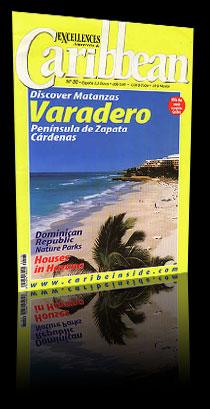Plantain or bananaA major source of wealth
In the Americas and fundamentally in the Caribbean, the web of cultures is very broad, there are cultures and traditions coming from our ancestors which are reflected on many fields of life, especially on the art of cooking.
In Cuba , for instance, the aboriginal population contributed with casabe ( a sort of bread made of flour and cassava) as well as some wealth taken from the land and treasures from the sea; the Spaniards added greens, vegetables, rice and cattle while the African slaves added plantains, bananas and yams.
Plantains and bananas grow in these tropical lands and are part of a common diet as fruit or vegetable, irrespective of the fact that they are found in a diverse range of varieties, either as the “big green plantain,” measuring some 25-30 cm longer or the known variety of Cuba by the name of “burro” (donkey), which are smaller and measures some 15 cm, both are excellent to prepare the so-called “tostones” or “plátanos a puñetazo” (flat-fried plantain), those stuffed with meat or the “mariquitas” (plantain chips) are a fast and delicious way to use them as a garnish.
There are many varieties in fruits as the “manzano,” the “Jonson” or the tiny ones as “ciento en boca” (hundreds in the mouth), measuring some 6 or 7 cm, very sweet to taste.
In the Caribbean, this food is cooked in different fashions, keeping a resemblance among one another, with different names which on occasions are very original. An example of this is a recipe made of boiled and macerated green plantains by the name of Mangú in the Dominican Republic, Angú in Panama, Mofongo in Puerto Rico and Fufú or Machuquillo in Cuba.
If you want to adhere to its followers, below you can read two simple ways of cooking them: Mofongo (Puerto Rico) 2 peeled green bananas, cut in slides 3 oz ground pork cracklings 3 peeled garlic cloves
Elaboration: Sauté the garlic cloves until golden on a pan. There the plantains should be fried at middle heat until they get harder, remove them from the pan, crush them and add the ground pork cracklings. Finally, shape middle-size balls. Serve hot.
Mangú (Santo Domingo) 2 peeled green plantains Olive oil and salt
Elaboration: On a large pan, boil the plantains in abundant water and salt, cook them at middle heat until tender. Remove and drip. Split the still hot plantains in chunks and crush them on a mortar, little by little add the oil and the remaining water until achieving a soft puree. It is served with onions sauté in oil and fried egg.
Bon appetite!












































































